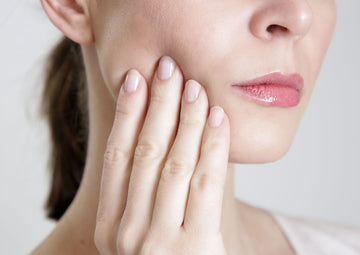

“Cavity” is one word that no one wants to hear as they’re sitting in the dentist chair. These pesky oral health concerns are a common problem among Americans. The CDC reports that more than 80% of people will have had at least one cavity by age 34. Despite that daunting statistic, cavities are largely preventable with a proper oral hygiene routine and regular trips to the dentist for professional cleanings.
We’ll dive into what causes cavities, how you can spot one, and tips for preventing future cavities so you can spend less time with tooth pain and more time flashing your pearly whites.
Table of Contents
- What Causes Cavities?
- 3 Symptoms of a Cavity
- The 4 Stages of Tooth Decay
- How to Treat Cavities
- Can a Cavity Go Away on Its Own?
- 5 Tips for Preventing Future Cavities
What Causes Cavities?
Before we dive into what causes cavities, it’s helpful to understand how cavities are formed. Cavities happen as a tooth begins to decay due to plaque formation. A simple way to think about a cavity is to envision a hole in your tooth that widens and deepens over time as the acids within your mouth eat away at your tooth enamel.
Though plaque is the more obvious culprit behind tooth decay and cavities, other factors also play into cavity formation. Here are a few of the other sneaky ways that cavities can form.
Poor Oral Hygiene
Brushing your teeth twice a day for two minutes and flossing regularly not only gives you that clean mouth feel, but it helps to scrub away plaque build-up in your mouth. The less plaque you have on your teeth, the less chance you’ll have to develop a cavity.
Dry Mouth
Dry mouth increases the risk for tooth decay and cavities because saliva helps keep harmful bacteria at bay. If you’re experiencing dry mouth that interferes with eating, drinking, and talking, it’s important to schedule a visit with your dentist so you can pinpoint the problem and take measures to prevent dry mouth.
Plaque Formation
No matter how diligent you are when it comes to brushing and flossing, plaque will inevitably build up in your mouth. That’s why professional teeth cleanings twice a year are so essential for keeping your smile in tip-top shape.
Eating and Drinking Habits
Sugary food and drinks are some of the main causes of tooth decay. When you chew food, acid is produced and starts to dissolve the tooth surface. Some foods to be sure to brush after eating include:
- Fruit
- Honey
- Milk
- Dried fruit
- Breakfast cereals
- Soft drinks
- Juice
- Sauces
- Syrups
Medical Problems
Some medical problems increase the risk of tooth decay. Those with diabetes tend to be at a higher risk for developing cavities. Certain eating disorders such as bulimia cause the tooth to decay faster as the acid in vomit breaks down the enamel of teeth.
3 Symptoms of a Cavity

If you’re ever unsure about whether a cavity is forming on your tooth, there are three main red flags that indicate the beginning or worsening of a cavity.
Pain
An ongoing ache is a sign of possible tooth decay. Pain is one of the most common symptoms and can come all of a sudden or as a constant dull ache.
Hot and Cold Sensitivity
Sensitivity to hot and cold foods long after you’re finished eating is a common sign that you have a cavity. This sensitivity happens as the enamel wears away and affects your tooth’s dentin, which is the hard tissue layer underneath the enamel. As the enamel wears down, there isn’t enough left to protect the dentin, and foods can begin to affect the nerve inside your tooth.
Pits
When tooth decay starts, this can show up on your tooth as a white spot. As the tooth decay worsens, the spot can become darker. Staining on the tooth caused by tooth decay can be white, brown, or black and appears on the surface of the tooth.
As a cavity worsens, you will end up with a hole or a pit that you might be able to see in the mirror, but not all pits are obvious. If you notice a hole or pit in your tooth, make an appointment to see your dentist. This is a clear sign that you’re dealing with tooth decay.
The 4 Stages of Tooth Decay

As a tooth decays, each layer breaks down. In the early stages of a cavity, there are still measures you can take to prevent or treat the cavity from turning into full-blown tooth decay.
Stage 1
A white, brown, or black spot on the tooth's surface is a sign of early decay. In this stage, it’s possible to treat a cavity before it needs a filling. Dental hygiene can stop the erosion and fluoride can help to remineralize the enamel.
Stage 2
At this stage, the tooth decay has gone through the enamel layer of the tooth. This stage of tooth decay can’t be reversed, but the tooth can likely be saved.
Stage 3
Now, the cavity has gone through the enamel to the softer layer of the tooth. It will destroy the tooth structure more quickly as the layers of tooth beneath the enamel are not as hard. This is an advanced cavity that typically causes pain and toothache.
At this point, it’s important to set up a visit with your dentist to have a restorative treatment (such as a filling) or your tooth may worsen.
Stage 4
As the decay progresses, it will reach what’s known as the “pulp” of your tooth. This is where all of the blood vessels and nerve endings of your tooth are located. At this stage of decay, the only way to salvage your tooth is to receive a root canal procedure.
How to Treat Cavities

As we’ve mentioned, checking in with your dentist regularly is the best way for you to catch a cavity early on before you have to take drastic measures to save your tooth. Treatment of cavities depends on how severe they are and your particular situation, but here’s an overview of the different ways that cavities can be treated.
Fluoride Treatments
If your cavity is fairly new, a fluoride treatment can help restore your tooth’s enamel. Professional fluoride treatments are more effective than fluoride found in toothpaste or mouth rinses, so consult with your dentist to determine which treatment will work best for your cavity.
Fillings
Fillings are the main treatment option when tooth decay has progressed beyond the earliest stage. When you undergo a filling, your dentist will remove the decayed bit of the tooth and then "fill" the area on the tooth where the decayed material was removed.
Crowns
For a cavity that has progressed past the first few stages, you may need a crown. These are custom-fitted coverings that replace your tooth's entire natural crown. Your dentist will drill away all the decayed areas and enough of the rest of your tooth to make sure the crown fits seamlessly.
Root Canals
When decay reaches the pulp of your tooth, you may need a root canal. This is a treatment to repair and save a badly damaged or infected tooth instead of removing it. The diseased tooth pulp is removed, then the pulp is replaced with a filling.
Extraction
This is the worst-case scenario when it comes to tooth decay. When a tooth is so severely damaged that it can’t be restored, it has to be removed.
Can a Cavity Go Away On Its Own?
When in the early stages of tooth decay, it is possible that a cavity can go away on its own. You can help initiate this process by proper oral hygiene habits and a healthy diet. However, if a cavity is past the initial stages of formation, it cannot heal naturally. When you start to feel pain in your tooth, that’s a tell-tale sign that you need to set up an appointment with your dentist to have your cavity professionally treated.
5 Tips to Prevent Future Cavities

While tooth decay can be a scary topic, the good news is that cavities are preventable through proper oral care, a healthy diet, and regular trips to the dentist. Here are a few more ways you can fight off future cavities.
1. Brush Smarter
If you’ve heard this once, you’ve heard it a thousand times. Brushing your teeth is an essential component to a healthy smile. The American Dental Association recommends that you use a soft-bristled toothbrush and apply gentle pressure as you’re brushing.
They also recommend brushing at a 45-degree angle against the gums and moving the brush back and forth in short strokes. Then use the tip of the brush to clean the inside surfaces of the front teeth with an up-and-down motion.
Don’t forget to brush your tongue to remove bacteria and keep your breath fresh. The ADA also suggests replacing your toothbrush at least every three or four months.
2. Cut Out Sugary Food and Drinks
This doesn’t mean you need to cut out sugar entirely from your diet, but even a reduction in the amount of soda or refined sugars you eat or drink can make a big difference for the health of your teeth. The American Heart Association recommends swapping your soda for water, adding fruit to your morning oatmeal instead of sugary toppings like syrup, and enhancing foods with spices like cinnamon and ginger rather than sugar. Plus, watching what you eat can also help you keep your teeth white and prevent stains.
4. Floss Daily
Brushing helps remove plaque and bacteria from the surface of your teeth, but doesn’t do a great job of getting in the hard-to-reach spaces between your teeth. That’s where flossing comes in. Flossing can help break up food debris that’s been lodged between your teeth, which helps prevent tooth decay.
5. Use Fluoride
Fluoride is an excellent tooth decay fighter and is a great treatment to add to your oral hygiene routine. You can have professional fluoride treatments at your dentist's office, which consist of a highly concentrated rinse, foam, gel, or varnish. You can also reap the benefits of fluoride from toothpaste and mouthwash that has fluoride in it or through most water sources.
6. Make Regular Trips to Your Dentist
This is truly the most important way to ensure your teeth are healthy. Make a point to visit your dentist twice a year for teeth cleanings and check-ups so you can rest assured that your teeth are well taken care of.
Bottom Line: Cavities are Preventable With Healthy Oral Hygiene Habits
Your teeth do so much — from chewing the food you love to forming the smile that helps you create connections with others. The most important thing you can do to ensure you have a healthy smile for years to come is to be vigilant in your oral care routine, make regular trips to your dentist, and watch for any signs of tooth decay. That way, you can benefit from all that a healthy (and white) smile can do for you both internally and externally.




